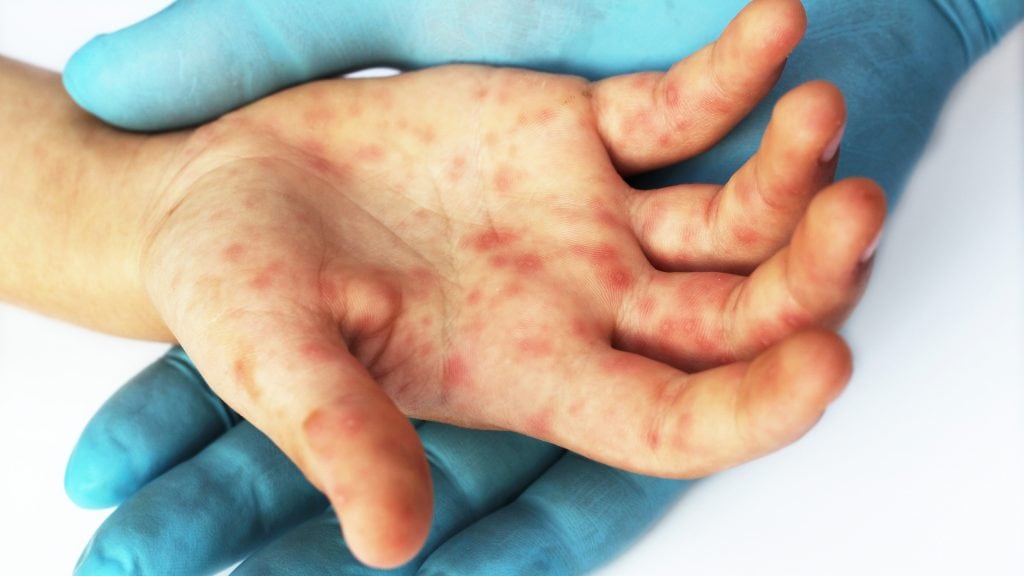Diagnosis
Your child's health care provider will likely decide if your child has hand-foot-and-mouth disease or other types of viral infections by evaluating:
- Your child's age
- Your child's symptoms
- What your child's rash or sores look like
Your child's health care provider may take a throat swab or stool specimen. Your child's provider will send the sample to the lab to determine which virus caused the illness.
Treatment
There's no specific treatment for hand-foot-and-mouth disease. Symptoms of hand-foot-and-mouth disease usually clear up in 7 to 10 days.
A topical oral anesthetic may help relieve the pain of mouth sores. Over-the-counter pain medications other than aspirin, such as acetaminophen (Tylenol, others) or ibuprofen (Advil, Motrin IB, others), may help relieve general discomfort.
From Mayo Clinic to your inbox
Self care
Some foods and beverages may irritate blisters on the tongue or in the mouth or throat. Try these tips to help make blister soreness less painful for your child. These tips may also make it easier to eat and drink.
- Suck on ice pops or ice chips.
- Eat ice cream or sherbet.
- Sip cold drinks, such as water.
- Sip warm drinks, such as tea.
- Avoid acidic foods and drinks, such as citrus fruits, fruit drinks and soda.
- Eat soft foods that don't need much chewing.
If your child can rinse without swallowing, swishing with warm salt water may be soothing. Have your child rinse many times a day to ease the pain and inflammation of mouth and throat sores.
Preparing for your appointment
You may start by taking your child to your primary care health care provider.
Here's some information to help you get ready for your appointment.
What you can do
When you make the appointment, ask if there's anything you need to do in advance, such as fasting before having a specific test. Make a list of:
- Your child's symptoms, including any that seem unrelated to the reason for your appointment
- Key personal information, including major stresses, recent life changes and family medical history
- All medications, vitamins or supplements your child takes, including the doses
- Questions to ask your child's doctor
Take a family member or friend along, if possible, to help you remember the information you're given.
For hand-foot-and-mouth disease, some basic questions to ask your provider include:
- What's likely causing my child's symptoms?
- Other than the most likely cause, what are other possible causes for my child's symptoms?
- What tests does my child need?
- What's the best course of action?
- My child has other health conditions. How can I best manage them together?
- What can I do at home to make my child more comfortable?
- Are there restrictions I need to follow for my child?
- Are there brochures or other printed material I can have? What websites do you recommend?
What to expect from your doctor
Your provider is likely to ask you several questions, such as:
- When did your child's symptoms begin?
- Have your child's symptoms been continuous or occasional?
- How severe are your child's symptoms?
- Has your child recently been exposed to anyone who was sick?
- Have you heard of any illnesses at your child's school or child care?
- What, if anything, seems to improve your child's symptoms?
- What, if anything, seems to worsen your child's symptoms?
What you can do in the meantime
Avoid doing anything that seems to worsen your child's symptoms.
To help lessen your child's discomfort, providers often recommend these tips:
- Get rest.
- Drink enough fluids to prevent dehydration
- Avoid cigarette smoke, including secondhand smoke, and other things that may irritate the mouth and throat
